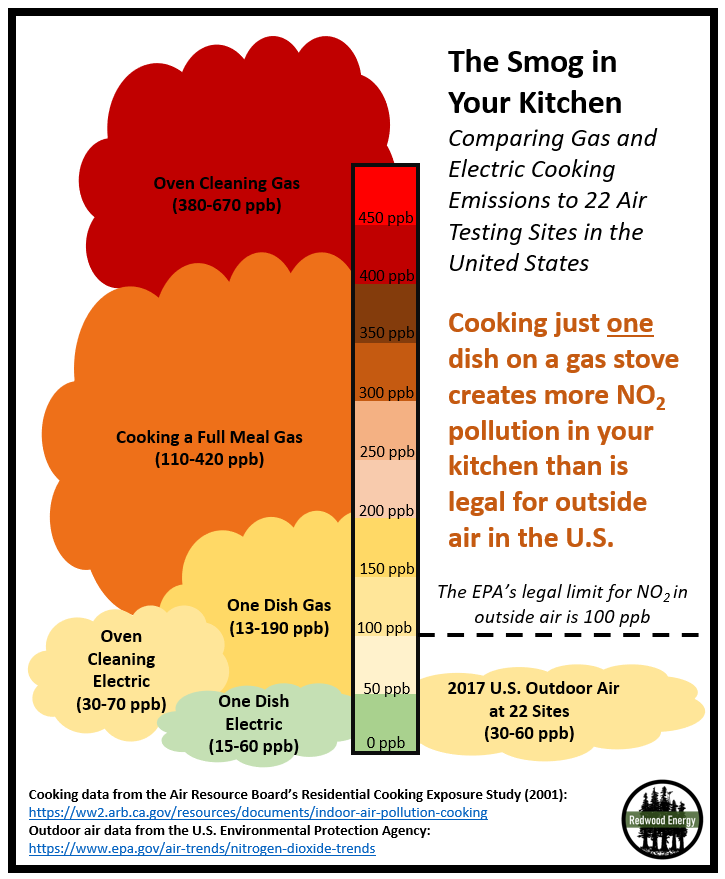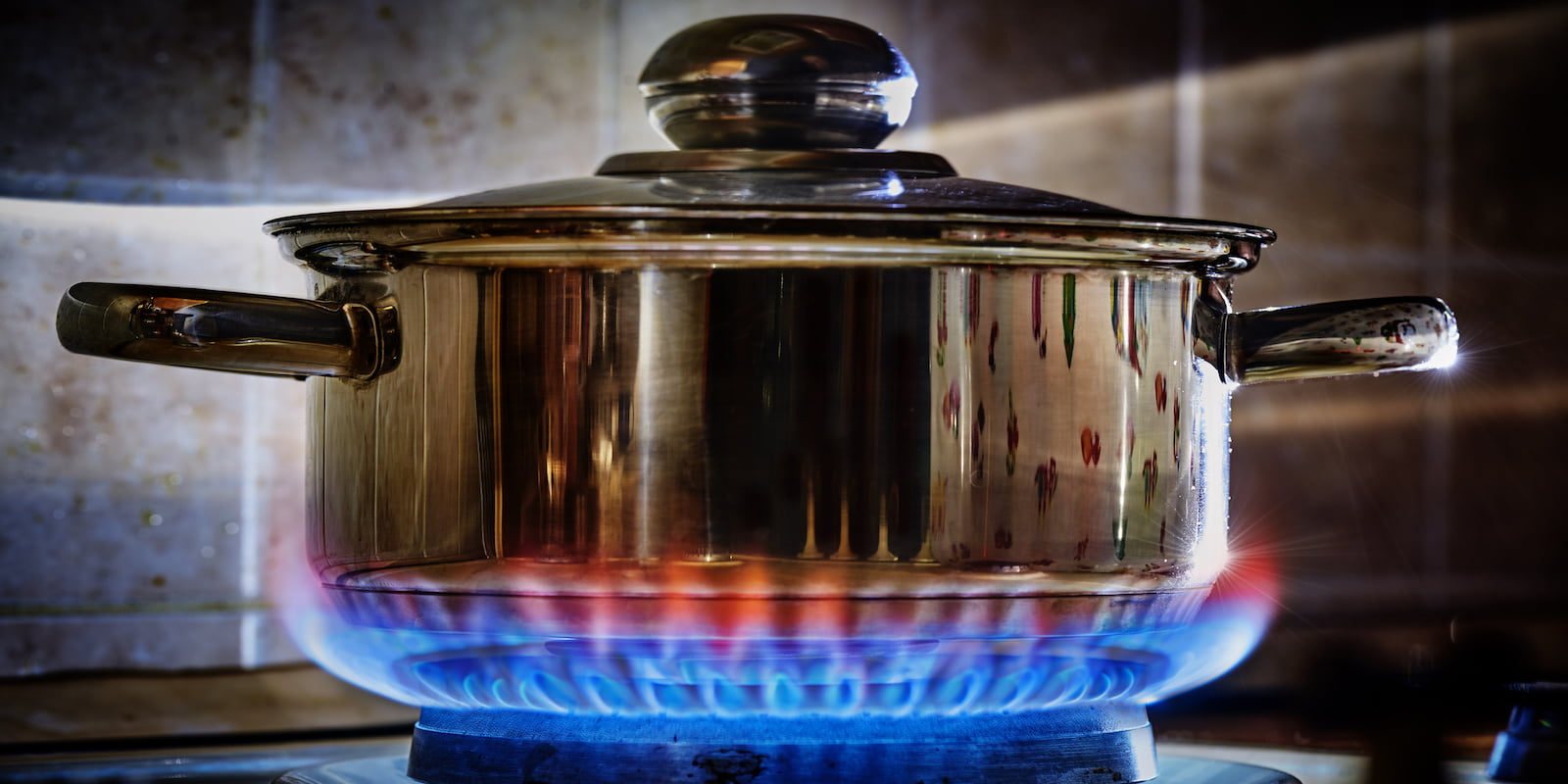It is well established that cooking with gas increases the risk of respiratory problems. But did you know that cooking with gas leads to higher levels of smog in your kitchen than the U.S. Environmental Protection Agency allows in outdoor air? In this summary of interviews, Redwood Energy’s Sean Armstrong explores the issue with Dr. Brett Singer of the Lawrence Berkeley National Laboratories, and Bruce Nilles of the Rocky Mountain Institute.
Armstrong: An April 2019 New Yorker article about the hidden air pollution in our homes said that there is actual smog formation in kitchens after 20 to 30 minutes of cooking on a gas stove.1 Was that an exaggeration?
Singer: If you add pollutants like nitrogen dioxide (NO2) from gas stoves to the cooking emissions, it is a mixture deserving of a name like “smog,” although that name is already taken by outdoor air pollution.
Armstrong: Bruce, you wrote in the New York Times2 in May 2019 that NO2 “can easily reach levels that would be illegal outdoors.”
Nilles: NO2 is one of the main pollutants from gas stoves, and it is both linked to childhood asthma in otherwise healthy children, and worsens pre-existing breathing problems.3 That is why the U.S. Environmental Protection Agency (EPA) sets outdoor health-based standards for NO2. But gas stoves cause indoor NO2 levels that can be worse than the outdoor air found next to gas power plants and highways.
Singer: In our research the issue is most acute in smaller homes. Just using a couple of gas burners got to problematic levels of NO2 in all the smaller homes.
Armstrong: How bad is it? Are indoor levels of NO2 from a gas stove as high as those found outside on LA-style smoggy days?
Nilles: Yes, the levels of NO2 in your kitchen are often higher than the EPA’s outdoor threshold of 100 parts per billion (ppb). The California Air Resources Board found gas stoves that were producing 190 to 1,000 ppb of NO2 in the kitchen after cooking a full meal, and even cooking individual dishes on gas stoves produced air quality that would be illegal outdoors.4 
Armstrong: So, cooking on a gas stove produces NO2 pollution as bad as the outdoor air in a city?
Nilles: Or worse. Every county in the U.S. today is in compliance with the EPA health-based NO2 standards outdoors, but not our kitchens if we have a gas stove
All the other benefits of going all-electric (link to first article) aside, the health benefits of avoiding gas should be sufficient to encourage builders to make going all-electric a priority.
Sean Armstrong is managing principal at Redwood Energy. This piece is adapted from: A Zero Emissions All-Electric Single-Family Construction Guide | Redwood Energy 2020.
References:
- Twilley, N. (2019). “The Hidden Air Pollution in Our Homes” The New Yorker.
- Gillis, J. and Nilles, B. (2019). “Your Gas Stove Is Bad for You and the Planet” The New York Times.
- Kile, M. et al. (2014). “A Cross-Sectional Study of the Association between Ventilation of Gas Stoves and Chronic Respiratory Illness in U.S. Children enrolled in NHANESIII.” Environmental Health Journal.
- California Air Resource Board. (2001) Residential Cooking Exposure Study Finds Unhealthful Levels.

